Review: 2017 YAMAHA FJR1300AE
The latest version of the mighty cruise ship. Here is our FJR1300AE review... Test: Jeff Ware Photography: Kris Hodgson, Jeff Ware
First introduced in 2001, the mighty FJR has stood the test of time as one of the all-time best sports-touring motorcycles ever made. More on the touring side than sports, the FJR manages to make luxury out of long days in the saddle, while still holding its own well and truly in the corners.
There were some fairly big revisions in 2007, including an auto version, followed by a Gen III bike in 2013 that had major updates done. Just a few years later we got an even further refined FJR1300A (test here) and now we have the AE with electronic suspension, a six-speed gearbox and lots more… We spent a few weeks with the bike and came away seriously impressed. It’s a true Interstate Turbine…

It might be big and heavy but the FJR1300AE is an extremely capable sports tourer. You would have to be a good rider to get away from a fast rider piloting one of these. No wonder the Police have them!
The FJR has been evolving for 15-years and it is the little changes that keep this bike at the top of its game all of these years later. Nothing too major ever happens, there is just no need for it, but the addition of a sixth gear is a major leap forward as it was needed. The fact that Yamaha engineers managed to make that change without redesigning the crankcases is amazing.
The electronically adjustable suspension is easy to use and modernises the bike and the FJR even has an IMU now, although funnily enough it is only used for activating the cornering LED lights. I suspect we will soon see an FJR with full tilt cornering ABS and TC like the YZF-R1.
There are plenty of other changes you can read about in the Tech Talk breakout. Yamaha have done a good job and made the likeable FJR even more capable and easy to ride. Styling took a more modern leap with the introduction of the A and AE also, with restyled fairings, hard panniers that look great and take a full face helmet or (I tried) a disassembled carton of beer! The LED lights are fantastic.
At night the ride is bright and commanding. The cornering lights are good and the electronically adjustable screen brilliant. Even the new dash is easy to navigate as is the cruise control. Also here in Australia the FJR comes with a 12V power socket and heated grips, along with the panniers, all as standard equipment, coming in at an impressive $27,999 + ORC.
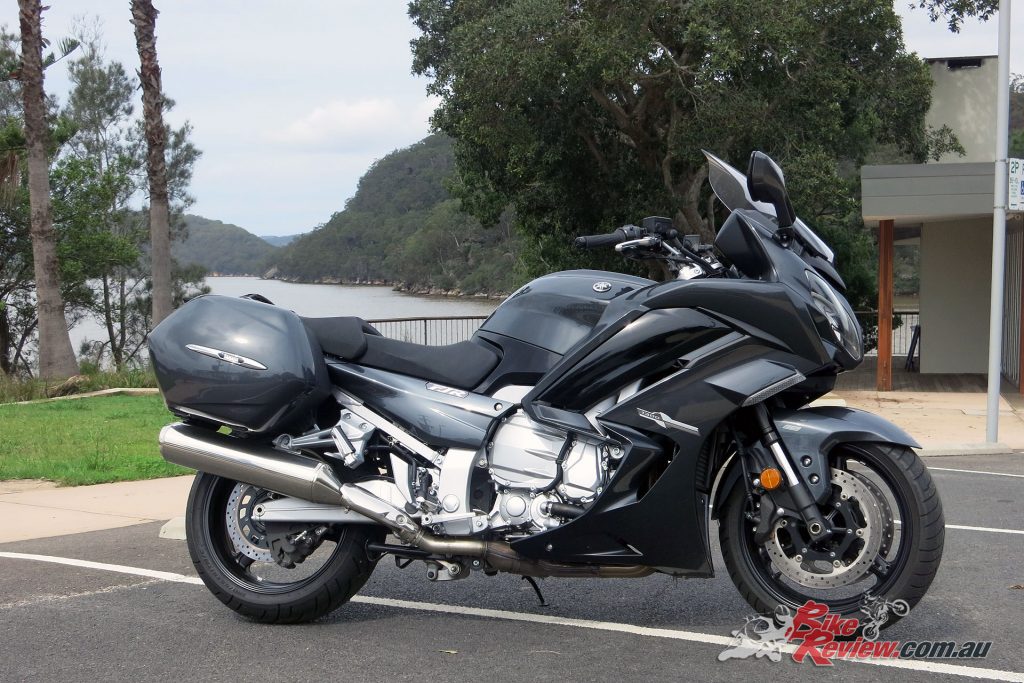
The FJR1300AE (FJR1300ES in the USA) features hard panniers as standard, a new six-speed gearbox, slipper clutch, LED lighting and cornering lights, riding modes, traction control, combined ABS, electronically adjustable suspension with presets, electric screen adjustment and more.
FJR1300AE – THE RIDE
When I picked the FJR up from Yamaha HQ, I was returning an MT-09 I had tested, so you can imagine how big the FJR felt. I hadn’t ridden an FJR since 2013, when I rode one to Cobar and back on special high speed run. This FJR AE was brand new and I have to admit, it looked stunning sitting there at the back of the warehouse at Yamaha.
It only had 1000km on the clock and was spotless. I was relieved to be jumping on the bike, as I was tired after a day testing the MT-09 with a painful knee as my knee reconstruction post-surgery healing continued. Although, I had some worry about the weight of the bike damaging my knee, that went out the pannier as soon as I sat on the bike and lifted it off the stand. The FJR carries it’s 292kg wet weight quite well.
I had a muck around with the switchgear to familiarise myself with the dash while that big turbine of an engine warmed up. The new dash was easy to learn and clear to read. I set the D-mode to T (Touring), and the suspension to SOFT – 0 for the damping and single rider plus luggage for the rear preload, which to do correctly I had to step off the bike briefly to allow it to adjust correctly.
It’s a simple to use system with damping front and rear combined of SOFT, STD, HARD presets that each have minus 3 or plus 3 individual increments totaling 21. Preload has single rider, single with luggage, rider and pillion, rider and pillion with luggage. Yamaha say there are 84 combinations in total! I stuck to pre-sets for now. Once all of that was done, I pulled in the clutch and hit the road smiling…
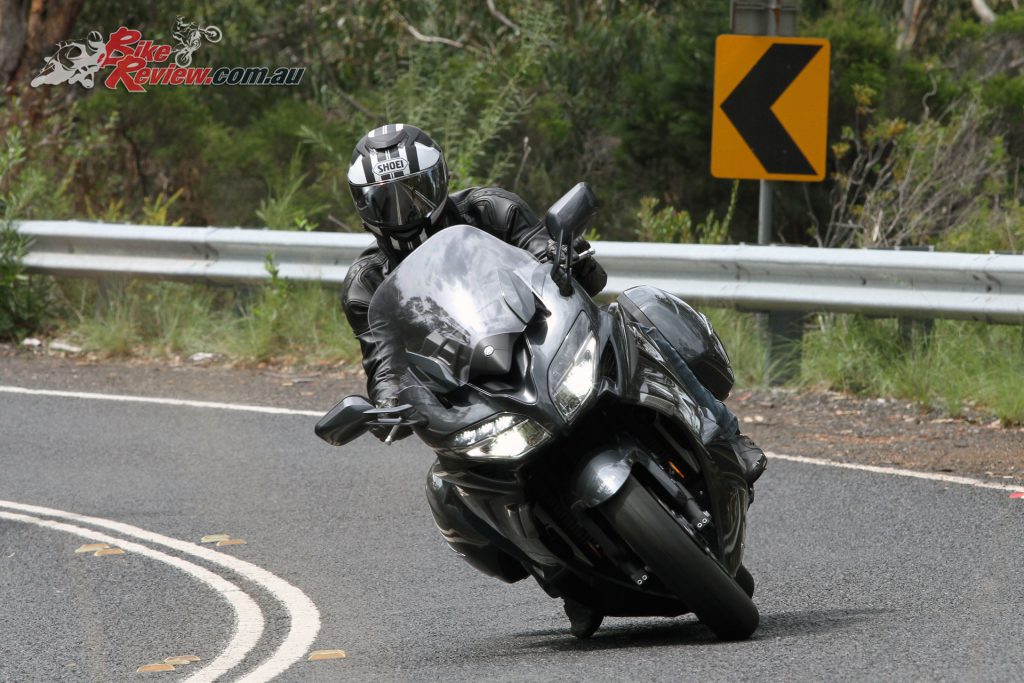
Cornering capability on the FJR1300AE is up there. Here I am on my local twisties, and I found the two riders without luggage preload setting best, with damping on HARD + 0. D-mode was in Sport.
Just a few minutes from Yamaha I hit the tollway, where I take the opportunity to set the cruise control and raise the screen, flick the grips to lowest warm and sit back and relax in ultimate comfort. Cruise works in the top three gears but with a 100km/h speed limit I’ve got the bike in fifth. Sixth is an overdrive for out of town cruising.
Right now, right here and as knackered as I am I can tell you I feel like I’ve just had a massive day and have just checked in and boarded a business class flight home. Yep, today my upgrade request was accepted! I just can’t wait to enjoy a cold beer in the shed and admire this beast when I get home. And it is bloody Friday too. Cheers!
The engine is almost silent and silky smooth right now. The screen I have in a spot-on position that is leaving me in this silent cockpit of five-star travel. I also feel like I am familiar with the bike. Yamaha haven’t made any radical changes to the layout or ergonomics, which is a good thing. The ‘bars are in the standard of three positions and the seat is on the taller setting. The bike cruises well.
After 10km of traffic hell to link up to the northbound freeway for my run home, I realise big bikes like the FJR can be a pain in traffic, mainly due to the width of them and like all bikes with panniers fitted, lane filtering is extremely limited unless you have lights and a siren of course! Still, the FJR is comfortable and the new clutch super light and smooth in action. The engine temp is well regulated and after I stop for a Coke and a break at the servo I’m happily on my way with no aches or pains.
This time I switch to Sport D-mode, which is the same power but a more direct throttle that is more like the previous model FJR, damping STD and leave preload. I prefer Sport mode immediately and leave it there for the remainder of the test…
I hit the freeway and set cruise to 120km/h and muck around with the screen again. I do notice some vibes through the ‘pegs and ‘bars surprisingly, as I edge up toward $1.30 and beyond. This is around dissipates either side of that. But at the legal limit the engine is smooth. The dash is easy to navigate but as I say, these days you really should save changes for when you are stopped as it is easy to look away for too long, much like texting on a phone…
100km in and I take an exit off the freeway to finish my commute on some twisties. I pull over and set the suspension to HARD damping, plus 0, and preload to two lids, no luggage. I also put the screen lowest, just for that MotoGP look (muffled laughter…).
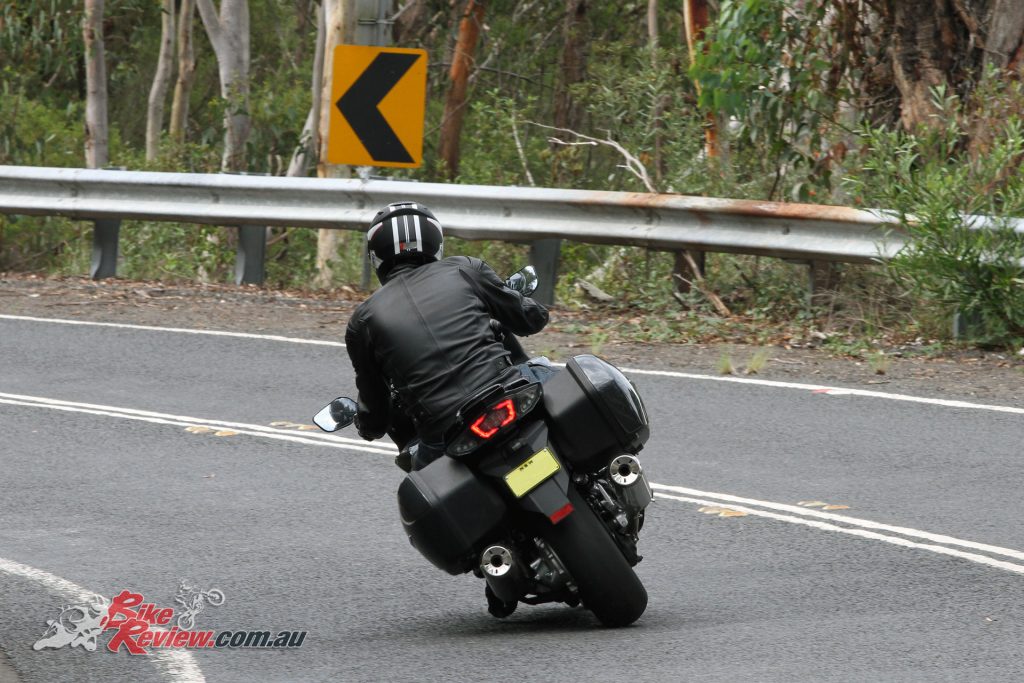
Ground clearance is good for a sports-tourer but limiting in the tighter twisties. You can still punt the bike hard though, and there is always power on tap.
The FJR livens up as I start to flick the bike through the esses. The surge or torque is electric. It’s not explosive, it doesn’t stretch my arms or even make my heart beat faster, but it is propelling the mighty FJR and I along at a rapid rate from turn to turn and I’ve just left it in thrird, no gear changes required.
Power is progressive yet endless. It is everywhere but requires slightly pre predictive throttle opening than a full blown sportsbike does to achieve efficient progress off a turn. Once I get it right, I start to enjoy the FJR like I would any smaller tourer, nakedbike or sports tourer.
Turn-in is accurate, fast and light in the medium turns. I feel the weight in the tight corners of course but the bike is still great for its size. Ground clearance reasonable but really predictive and the ‘pegs give warning at the right limit. I would not want to push the bike over any further unless I had to.
The suspension is really supportive and keeps the bike balanced in the smoother turns, while in the rough parts is doing an admiral job of controlling some serious sprung and unsprung mass. I spend an hour lapping a section and playing with the settings outside of the presets, only to come to the conclusion that I’m not making much difference and stick to what Yamaha tested and developed.
I can’t feel the traction control doing anything, which is a good thing, but it is nice knowing it is there for me. The same goes for the ABS. I get pretty serious at one point and I brake deeper and harder than I’m comfortable with. It was scary moment, a lapse in concentration, and the FJR pulled around the tightening radius turn on the brakes, hard, and on the left footpeg mind you, and we made it.
There is a lot of mechanical grip in this bike, thanks to both the geometry and the weight, so it is confidence-inspiring with lots of feel for a big bike on sports touring rubber. The 180-section rear tyre really helps with cornering agility and direction changing too, it makes the bike feel lighter and more nimble than it should.
After spending ages hooning on the bike, it’s getting dark and time to head home. I’ve had a blast though and I’m surprised that I’m so energised after testing the MT-09 in the same place all day. That’s the thing about bikes. They soon make you forget your problems as you hit the corners…
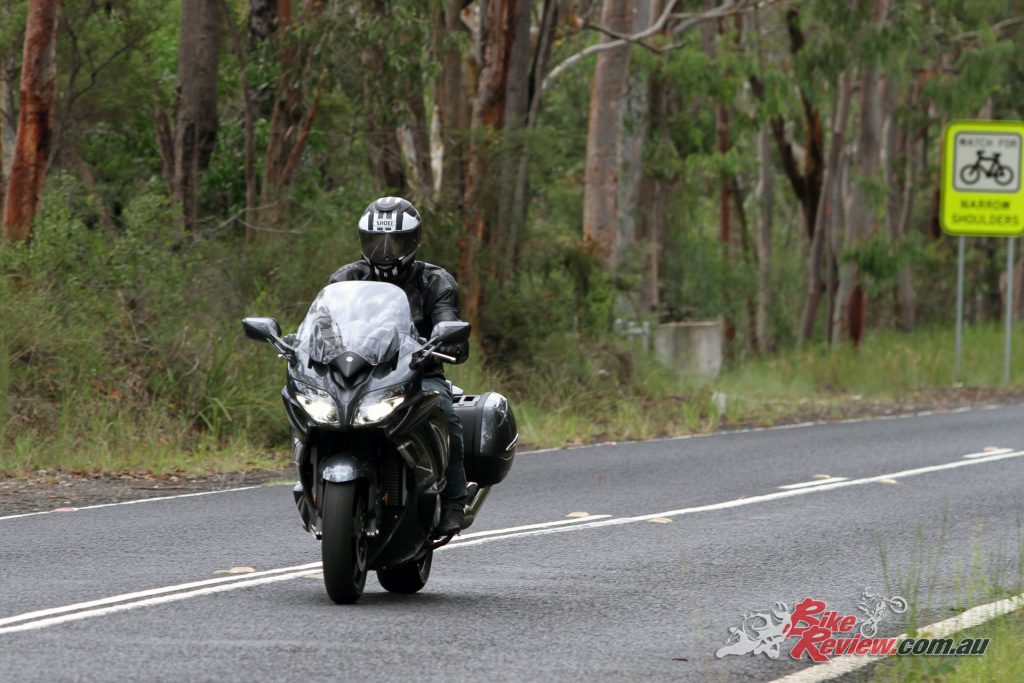
Cruising in comfort on bumpy country roads or getting serious in the twisties, the FJR1300AE is a truly versatile bike and with the push of a few buttons can adapt to whatever your riding conditions or mood might be.
A feature that I find a strong point on the FJR is the braking package. Not all combined systems work for the rider. Some can limit braking if a rider is super experienced. However, I did multiple emergency stop tests on the FJR and the brakes were great.
Yes, I could feel the weight of the bike, the brakes were certainly pushed to their limit in this fitment, but they pull the bike up amazingly well and the ABS only kicks in when excess pressure is applied purposely (or of course in an emergency where grip is lost). An upgrade to monoblocks and perhaps larger rotors next model change would be welcomed though, as the brakes aren’t perfect…
Motoring on home, I get to experience the headlights and I give them a big thumbs up, along with the cornering LEDs, which take a bit of getting used to but work well. The heated grips, again, are always something I rate highly.
As I arrive home and idle the FJR1300 into my garage I notice one more cool feature, the rpm rises as the clutch is let out from idle. Too cool. I park the bike up, head straight for the fridge and crack a beer. Six beers later I was planning on where I can take the FJR the next day. It’s just that type of bike…
Over the next two weeks, I used the FJR as a daily ride, going shopping and using it to cart camera gear around. I did plenty more highway riding and was sad to see it go back to Yamaha. A really good bike and one worth considering if you have some touring to do, particularly two-up, but you also want your sports riding fix. It might be a senior citizen but the FJR has plenty of life left in it as it heads into the modern world of electronics.
2017 YAMAHA FJR1300AE TECH TALK
The new FJR1300AE features electronically adjustable suspension and a range of updates for 2017.
The bike comes with bar mounted damping force adjustment of the front suspension and preload and damping adjustment of the rear suspension. Upside-down front forks with independent right and left damper mechanisms are now fitted, with the compression in the left fork and the rebound in the right fork, just like on the YZF-R1.
Riders can select D-mode (Drive-mode) for varying mappings. This works in conjunction with YCC-T (Yamaha Chip Controlled Throttle) generating engine character that can be sportier or more relaxed depending on riding situations. Traction control is standard on the FJR1300AE. While engaged, the system detects wheelspin and adjusts ignition timing, fuel injection volume, and throttle-valve opening to help maintain traction. The FJR also features cruise control and an electronic adjustable windscreen.
A three-part instrument panel provides riders with information and riders can easily customise the display to show the information they want.
The front brake lever activates six of the eight front braking pistons; the rear brake pedal activates two rear pistons and the other two front pistons – providing balanced anti-lock braking.
Additional features on the 2017 FJR1300AE include a two-position adjustable rider seat, low for shorter riders or nearly 1-inch higher for a more spacious feel for taller riders, plus handlebars that can be one of three different positions.
Yamaha’s designers have developed an all-new six-speed gearbox that gives increased acceleration together with reduced rpm during high speed top gear cruising. The result is more dynamic running performance with a greater emphasis on the bike’s sports character, together with a more comfortable and relaxing riding experience.
The complete gearbox has been redesigned, and the FJR’s new transmission is the first Yamaha to feature a separate dog clutch with newly designed helical gears. Compared to the current bike’s conventional transmission with a single unit dog gear and spur type gears, this new design is around 400 grams lighter and is no larger than the five-speed unit.
In order to achieve even gentler and more fluent chassis movement during downshifting, the new FJR1300AE model is fitted with a new A&S (Assist and Slipper) clutch that is similar to the design featured on the YZF-R1.
The A&S clutch utilises a slanted cam located between the clutch boss and pressure plate, and this design offers a number of advantages compared to the conventional clutch. Firstly, the slanted cam structure augments the force of the clutch springs, and this has enabled the use of lower rate clutch springs to give a much lighter lever action that requires less effort from the rider.
Secondly, during downshifting the A&S clutch is designed to partially disengage when the rotational torque being transmitted back from the rear wheel to the transmission exceeds the torque from the engine side. During hard engine braking the slanted cam is designed to allow the pressure plate to disengage partially and give about 50% clutch slip. By effectively damping the forces generated by back torque, the A&S clutch helps to moderate any chassis movement and instability during downshifting to give smoother handling.
The new models are equipped with a new twin-eye headlight design featuring all-new LED lighting.
The new headlight structure consists of a main lower portion that contains four compact and lightweight LED headlights, with the two outer lights projecting the low beam, while the two inner lights come on in association with the outer lights during the high beam mode.
The new FJR1300AE is the first Yamaha motorcycle to be fitted with adaptive cornering lights that illuminate the road as the bike starts to lean into a bend. Three LEDs are located in an upper compartment above each of the twin-eye headlights, and these are illuminated in succession when the bike’s Inertial Measurement Unit (IMU) detects that the motorcycle is banking over.
As well as featuring an all-new headlight design, the FJRs are also equipped with a completely redesigned LED tail light.
2017 Yamaha FJR1300AE Specifications
CLAIMED POWER: 107kW [146hp]@8000rpm
CLAIMED TORQUE: 138Nm@7000rpm
WET WEIGHT: 292kg
FUEL CAPACITY: 25L
ENGINE: Liquid-cooled, four-stroke, DOHC, EFI, forward inclined parallel four-cylinder with wet sump, 79.0 x 66.2mm, 1298cc, 10.8:1, TCI Ignition, shaft final drive
GEARBOX: Constant mesh six-speed
CLUTCH: Wet multiple-disc coil spring, A&E
CHASSIS: Aluminium, Diamond Shaped, Rake: 26°, Trail: 109mm.
SUSPENSION: Fully adjustable electronic inverted forks, 135mm travel, Linked monoshock with electronic adjustable preload and rebound damping, 125mm travel
BRAKES: UBS ABS, dual 320mm front rotors, four-piston calipers, single 282mm rear rotor, two-piston caliper
TYRES: 120/70 ZR17M/C (58W), 180/55 ZR17M/C (73W)
DIMENSIONS:
Wheelbase: 1545mm
Length: 2230mm
Width: 750mm
Height: 1325/1455mm
Seat height: 805/825mm
INSTRUMENTS: Multi function LCD display with analogue tachometer.

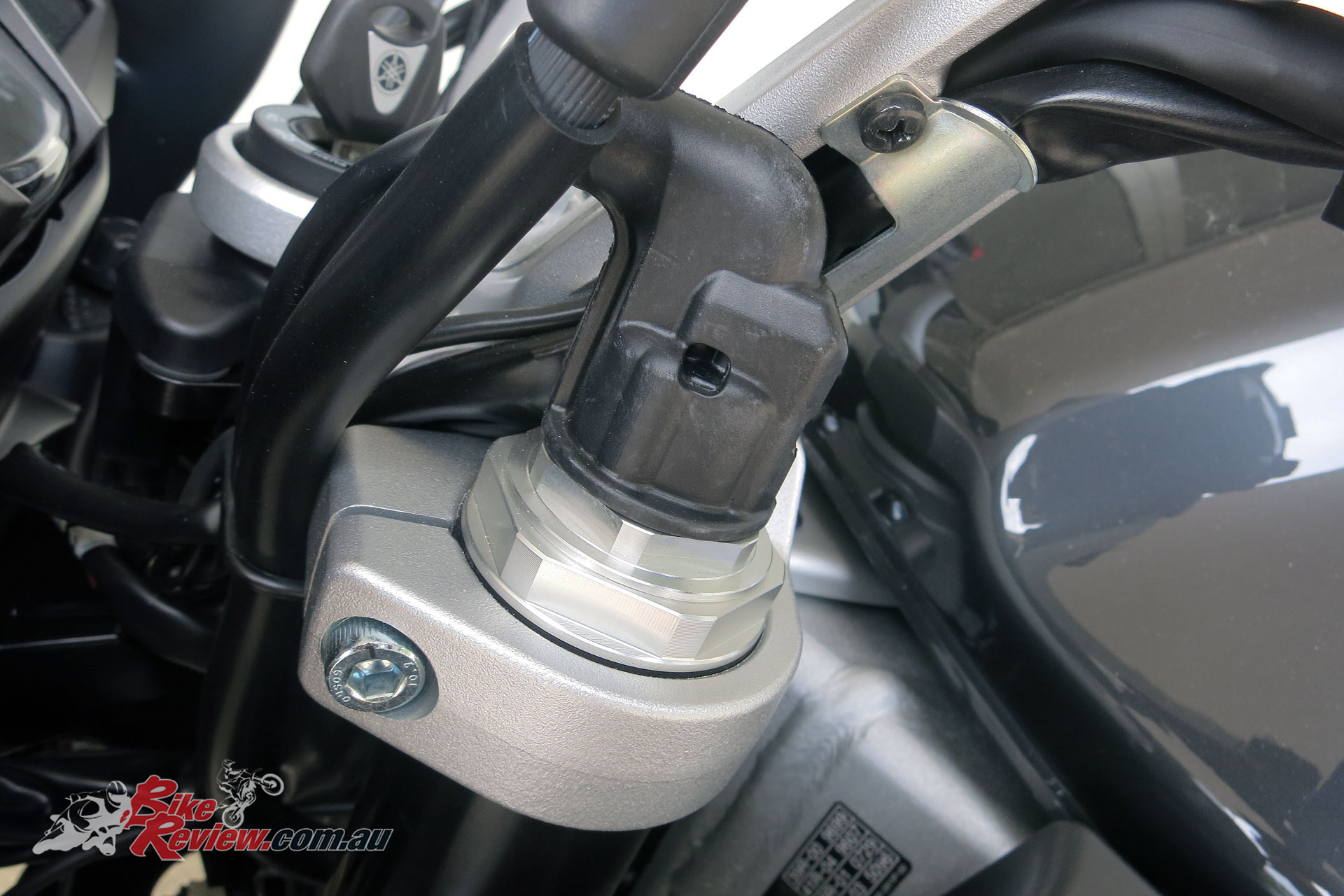




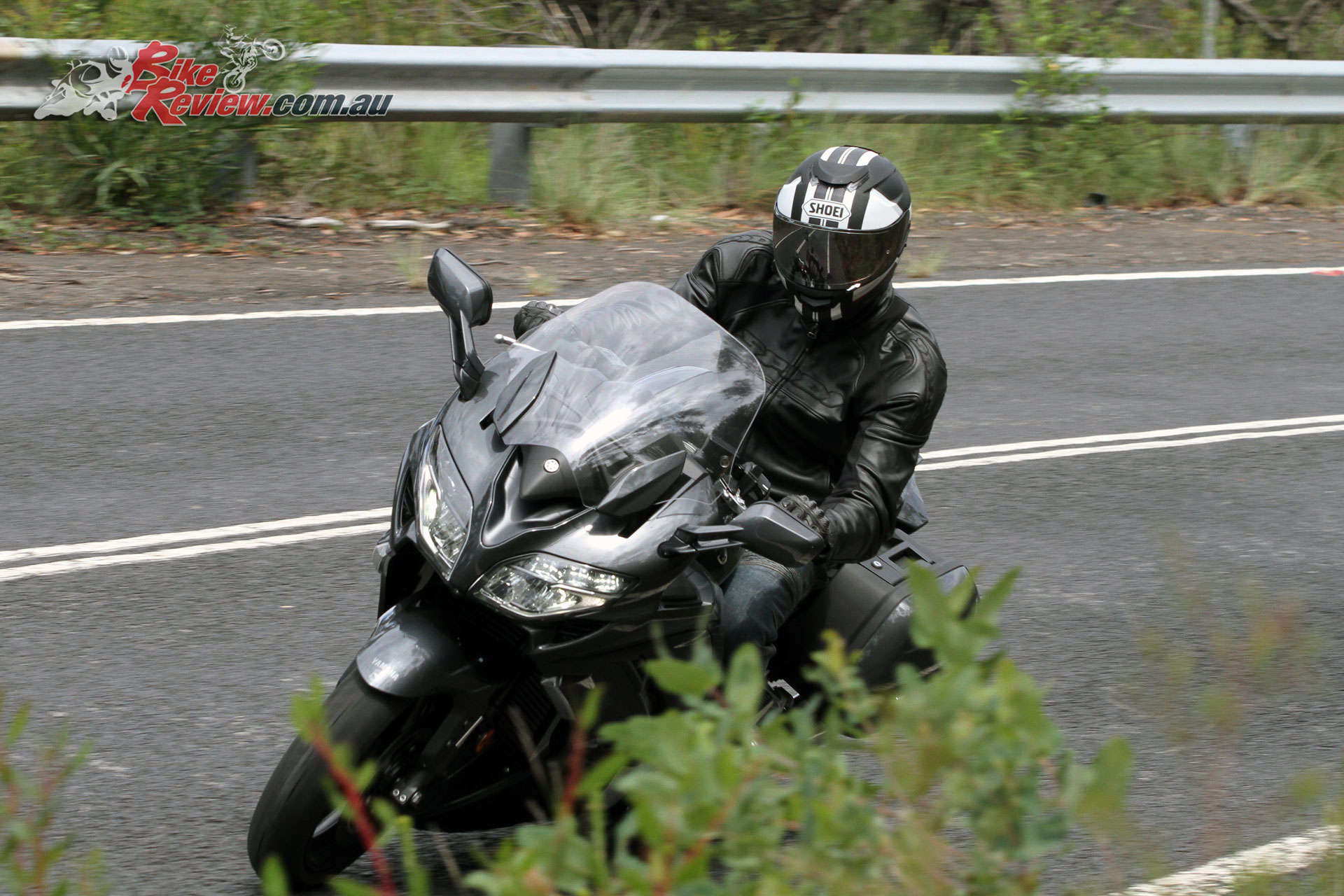
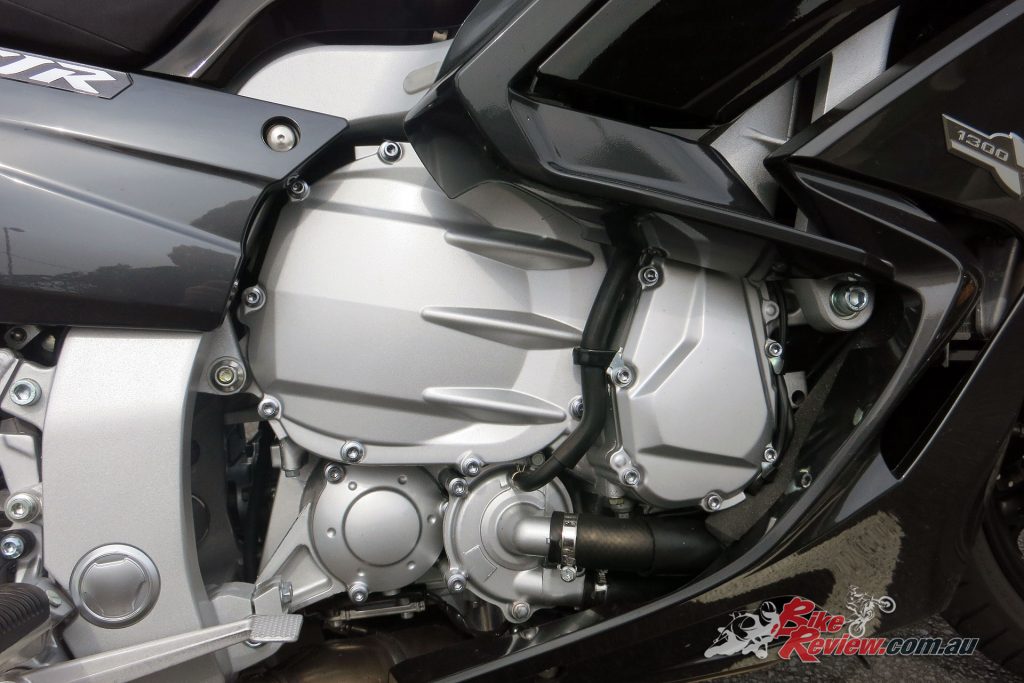
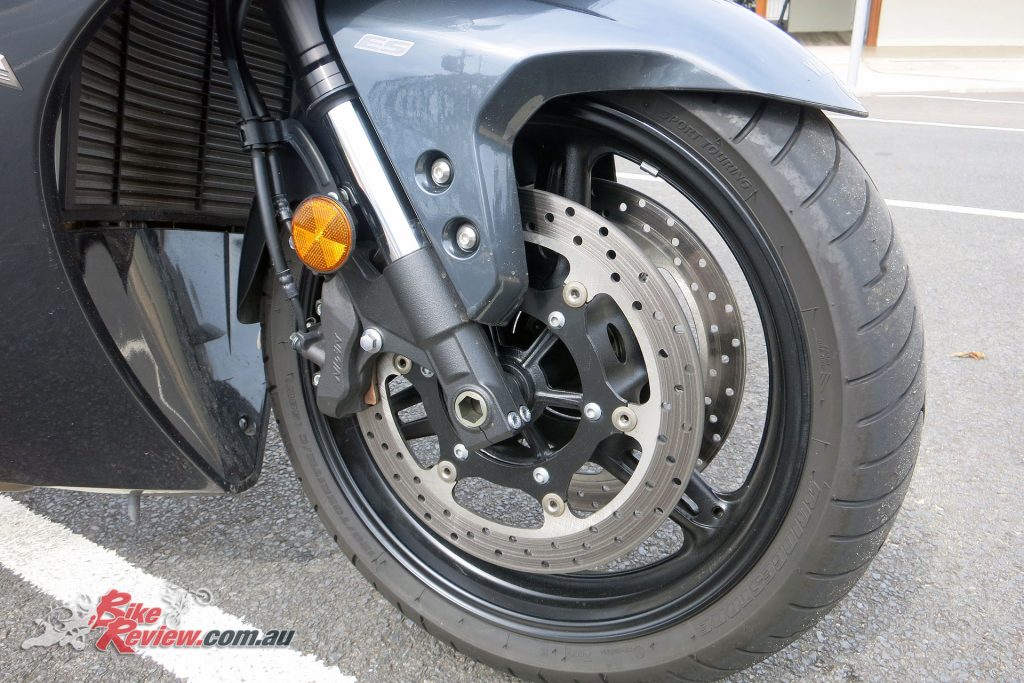
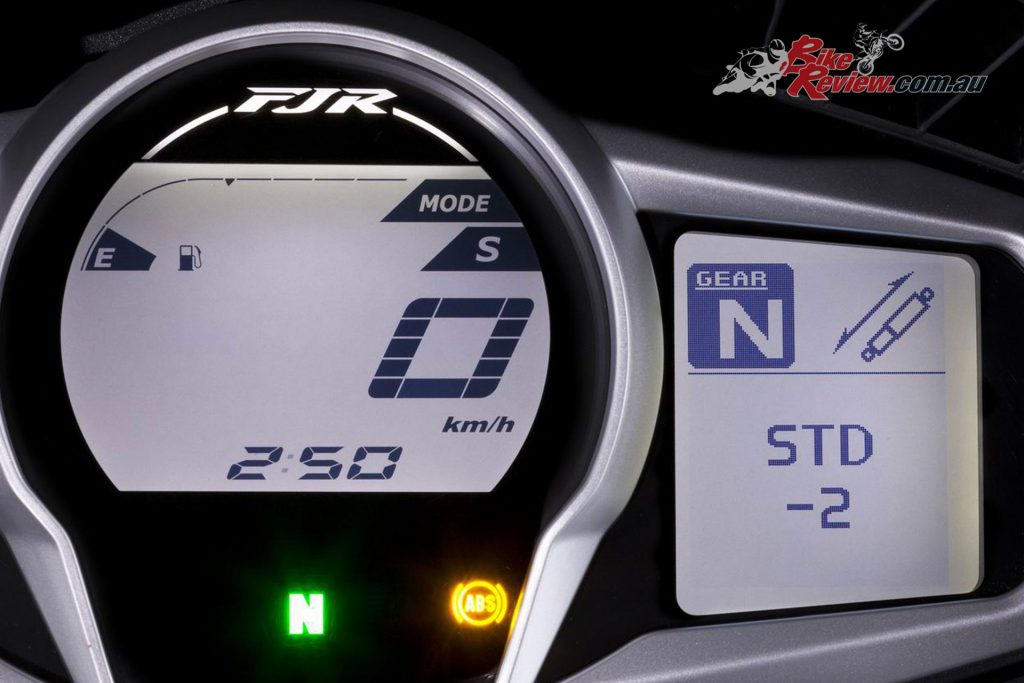


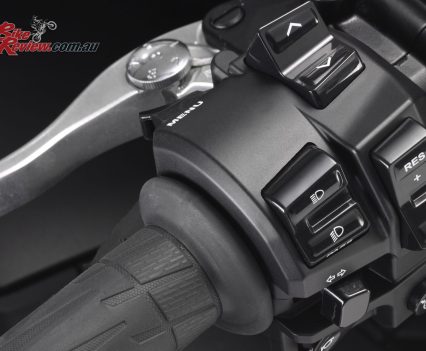
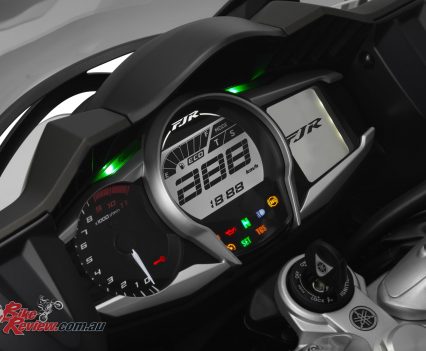
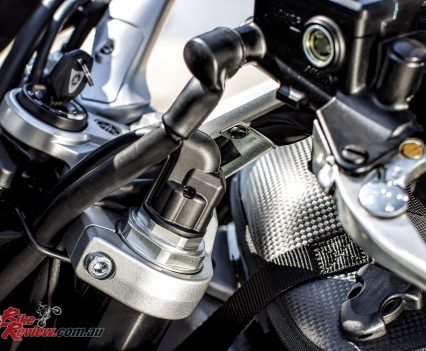
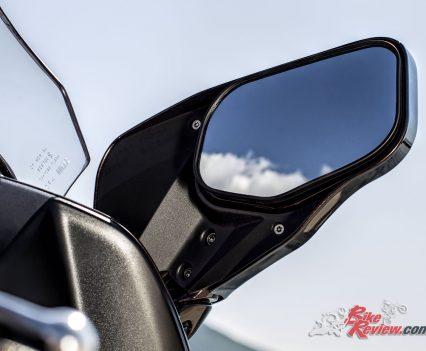
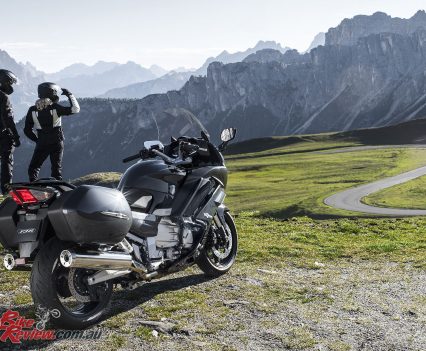

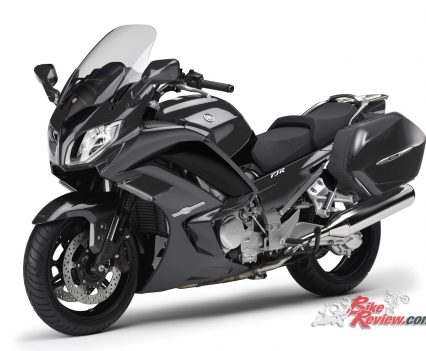

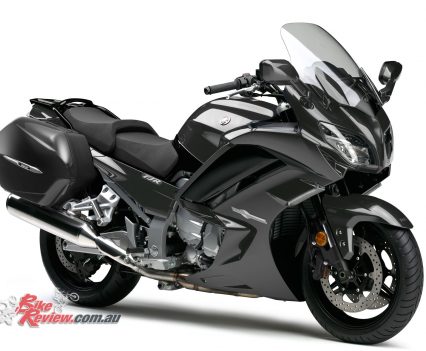

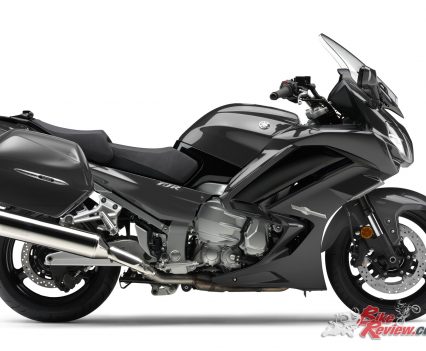

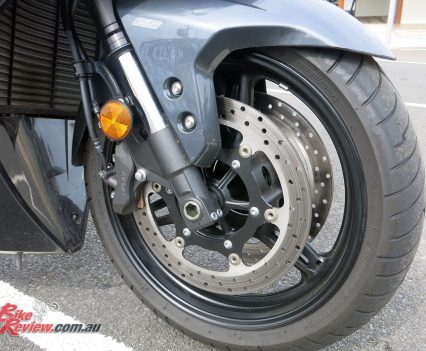
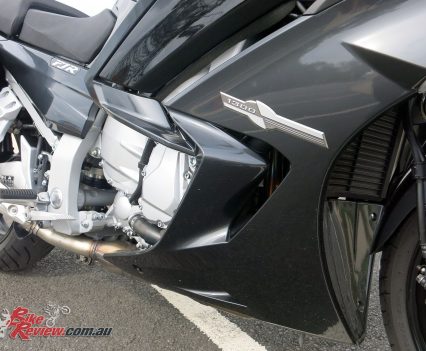
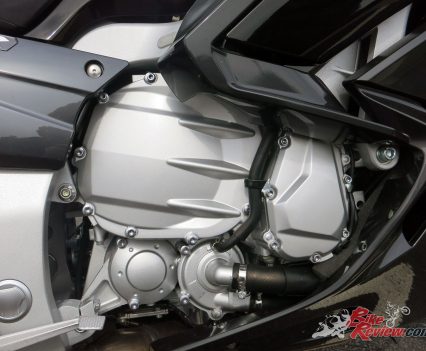
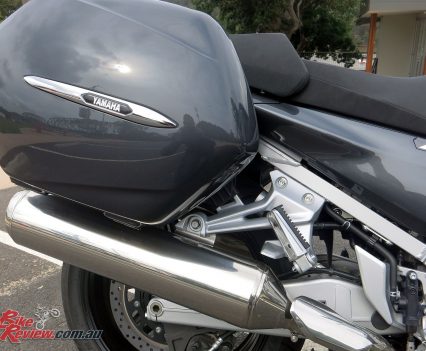

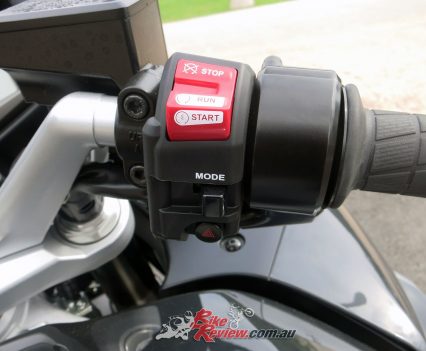

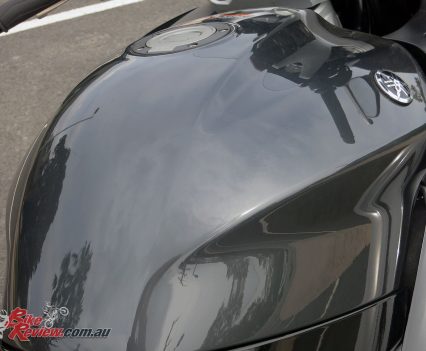
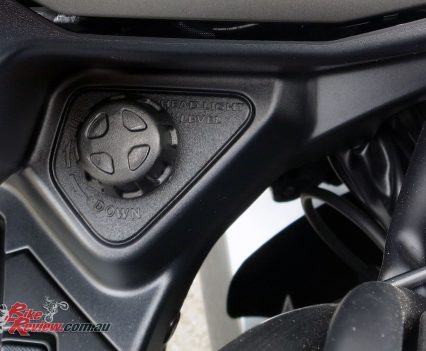
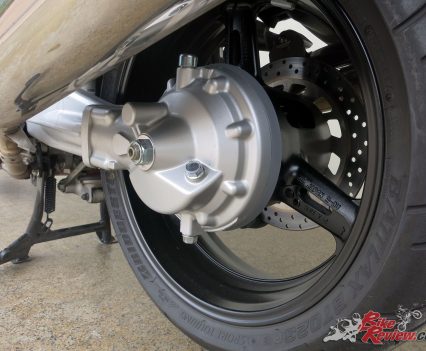
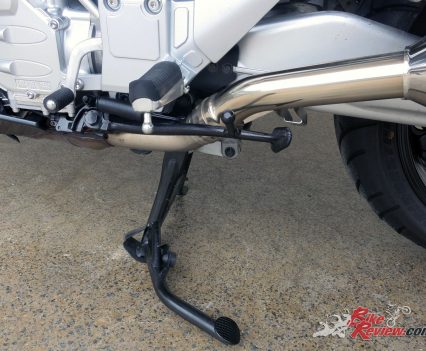




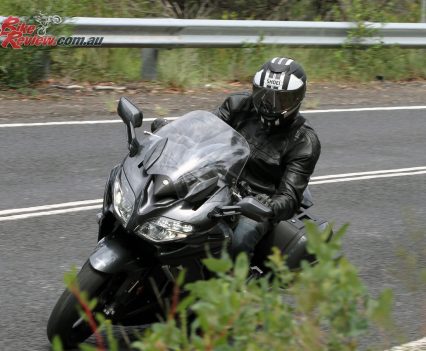



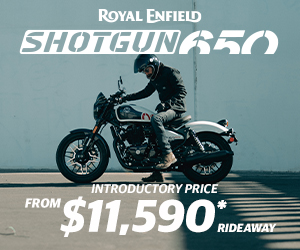



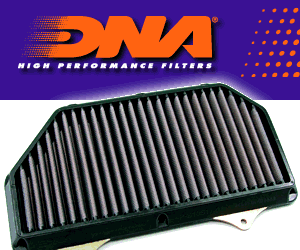





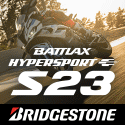


May 2, 2018
Nice review. Is it really $20K better than my 2002 FJR, now with 70,000 kms and running like a train?
May 2, 2018
That’s a bit of a tough comparison, as the 2002 FJR was around the $21K mark plus on roads back then, where this model is $27,999 + ORC, and comparing used to new can be a challenge, as it depends how well used bikes have been taken care of (and what issues they face as the km stack up and how much that’ll cost an owner) – much easier if you’re the only owner, or personally know the history of course! It’s a lot of money to hand over if you’re upgrading (and totally happy with a 2002 model), but it depends on whether you’re after the new technology, want a new bike and lots of other factors!